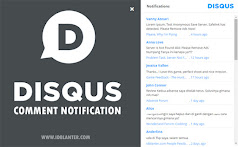The Google Foundation supports selected organizations whose work addresses the challenge of global poverty in ways that are effective, sustainable, and scalable. From time to time we will invite guest bloggers from grantee organizations to tell their story.
Recently, the Google Foundation awarded PlanetRead a grant to increase the number of SLS programs available, and Google is also supporting PlanetRead with free advertising through the Google Grants program and content hosting on Google Video.
When a billion people are illiterate (two-thirds of them women), and nearly half of the world lives on less than $2 a day, we believe it is important to examine the link between literacy and poverty. We are excited by the prospect of helping not hundreds, but millions, of people gain access to regular reading practice and improve literacy where it is needed most by supporting organizations like PlanetRead. - Google.org teamPosted by Dr. Brij Kothari, President, PlanetReadMy organization,
PlanetRead, works in Mumbai and Pondicherry, India. We have developed a “Same-Language Subtitling” (SLS) methodology, which provides automatic reading practice to individuals who are excluded from the traditional educational system, or whose literacy needs are otherwise not being met. This is an educational program rooted in mass media that demonstrates how a specific literacy intervention can yield outstanding, measurable results, while complementing other formal and non-formal learning initiatives of the government, private sector, and civil society. We are fortunate to have just been selected as a Google Foundation grantee.
More than 500 million people in India have access to TV and 40 percent of these viewers have low literacy skills and are poor. Through PlanetRead’s approach, over 200 million early-literates in India are getting weekly reading practice from Same Language Subtitling (SLS) using TV. The cost of SLS? Every U.S. dollar covers regular reading for 10,000 people – for a year.
I hit upon this idea in 1996 through a most ordinary personal experience. While taking a break from dissertation writing at Cornell University, I was watching a Spanish film with friends to improve my Spanish. The Spanish movie had English subtitles, and I remember commenting that I wished it came with Spanish subtitles, if only to help us grasp the Spanish dialogue better. I then thought, ‘And if they just put Hindi subtitles on Bollywood songs in Hindi, India would become literate.’ That idea became an obsession. It was so simple, intuitively obvious, and scalable in its potential to help hundreds of millions of people read -- not just in India, but globally. So you can see how it works, we’ve uploaded some
folk songs using SLS into Google Video. And we've uploaded
other examples there as well.
The Indian Institute of Management in Ahmedabad and its Center for Educational Innovation helped me pursue research on SLS. In the beginning we showed Bollywood songs with and without SLS to people in villages, slums and railway stations and video-recorded their reactions. We then piloted SLS in schools and on TV in Gujarat state while measuring reading improvement. This early work convinced us that we not only had an idea that would provide automatic reading practice, it was hugely popular (later, the ratings demonstrated this). After five challenging years of developing and strengthening the program, SLS went on national TV throughout India. On the
PlanetRead website, there are some video clips of SLS featured in a Bollywood film. Click on the “Video” link on the upper right to see the reaction of Indian villagers to the SLS experience.
There’s more on the effectiveness of this approach in
an article in the MIT journal
Information Technologies and International Development (it's a PDF file).
The idea of SLS tends to divide people into two camps – those who think it’s too simple to achieve anything, and those who understand that its simplicity and ability to integrate into popular culture can fundamentally alter the approach to the massive problem of low literacy. Now, a decade later, it is clear that the challenge of implementing SLS is changing minds used to resource-hungry approaches to literacy.
Fortunately, in India, several senior policy-makers in broadcasting and education are championing SLS. We feel it could be a breakthrough in how we approach literacy: SLS is inclusive, accessible, and builds upon popular songs and Bollywood films to create an enjoyable and effective learning experience. With support from Google, we have the opportunity to reshape the literacy landscape in India, home to a third of the world’s non-literates and early-literates. If this experiment succeeds in India, SLS could even go global!






.jpg)

